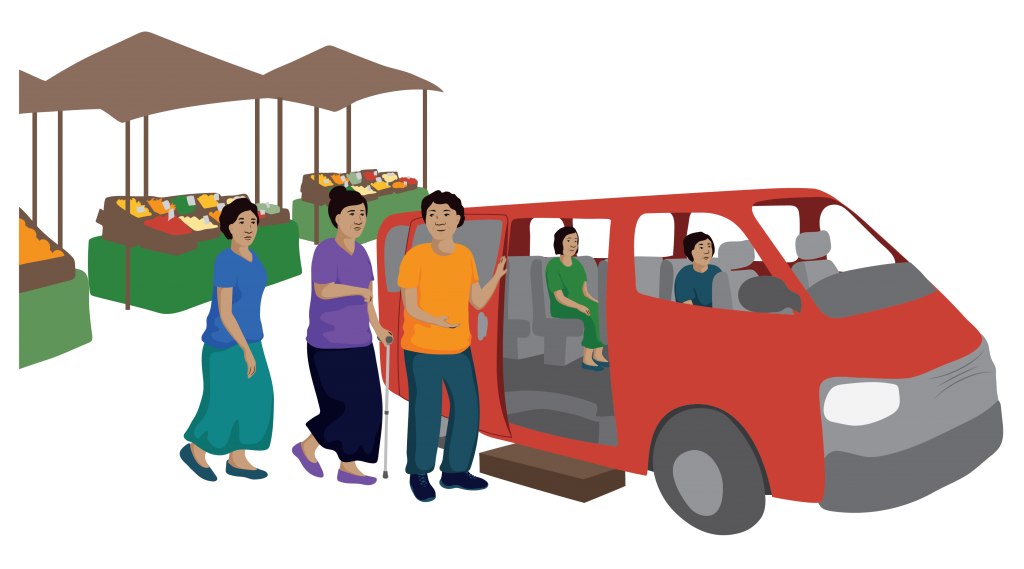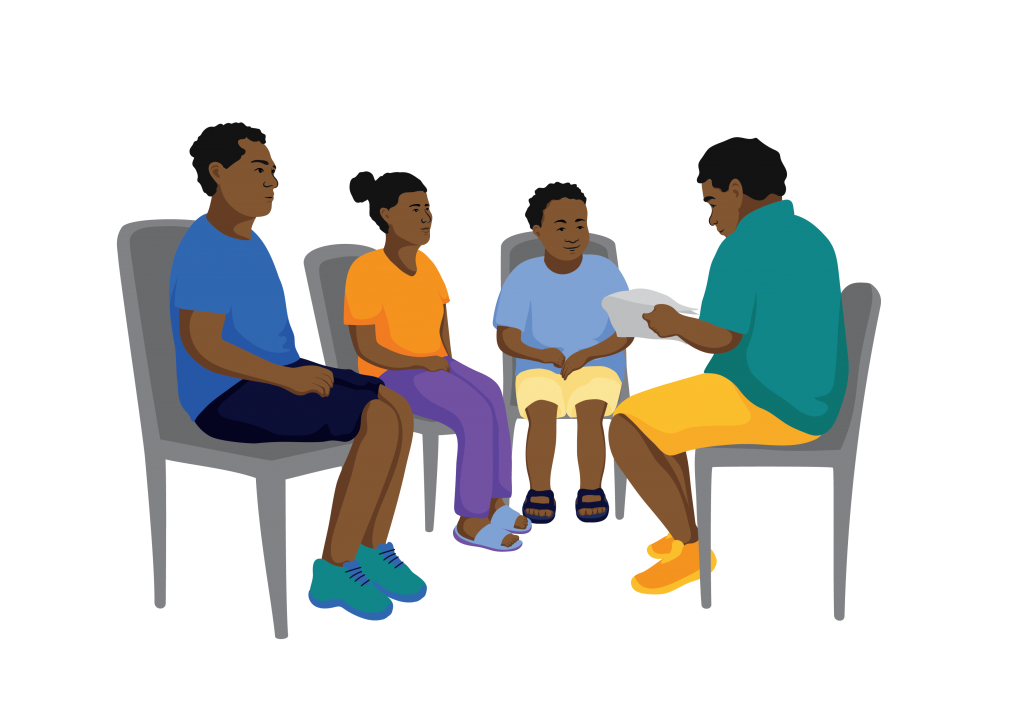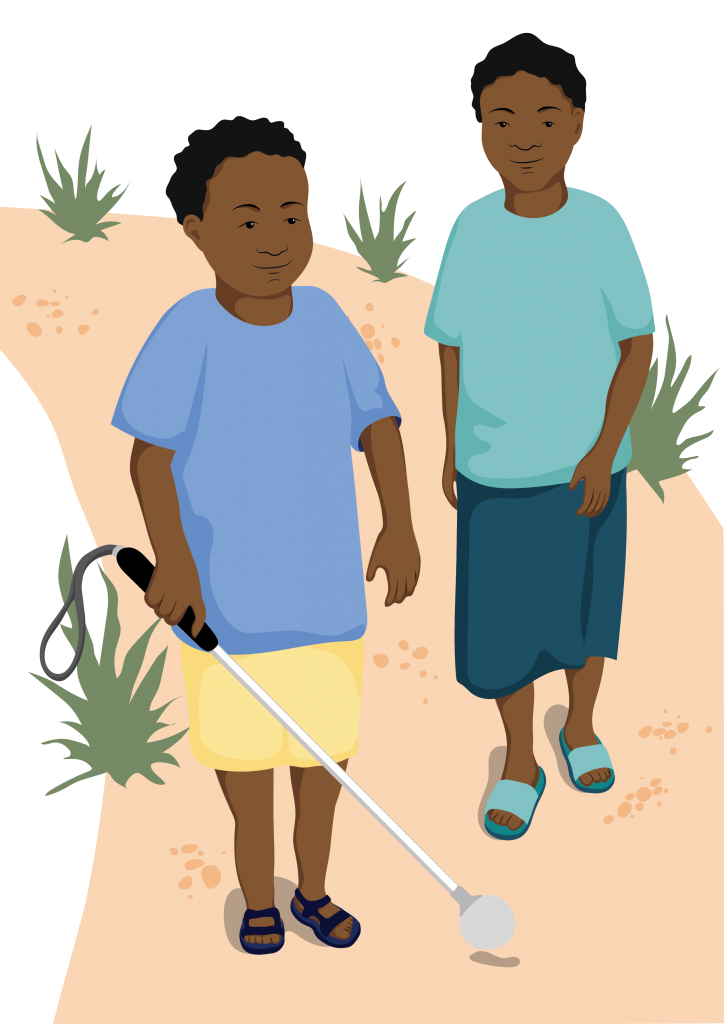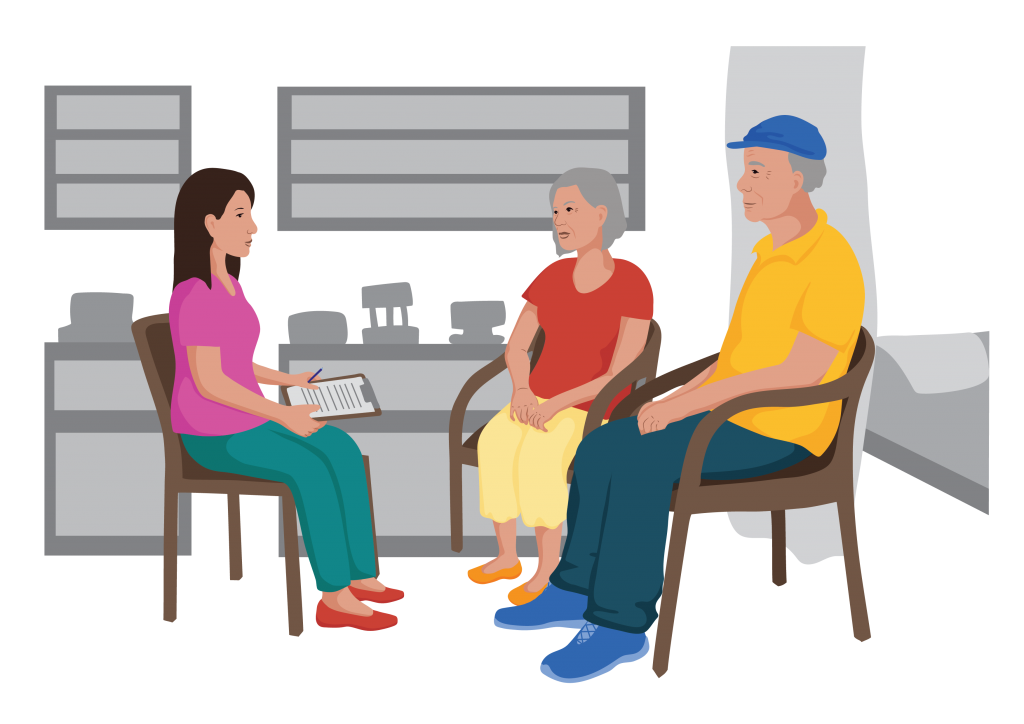Different roles in assistive product provision

Many people play a role in supporting people to access the assistive products they need. These include:
- The person who needs an assistive product and their family
- Those who identify a person who may benefit from assistive products, and refer them to an assistive product service
- Trained personnel who work with the person to provide them with appropriate assistive products
- Community members who all have a role to play in supporting people who use assistive products.
- Leaders and decision makers who for example, can make assistive products available through a public system, or ensure that public spaces and transport are accessible for people who use assistive products.
Meet Michael.
Michael was born blind. When he started school, his parents heard about a community organization that supports people with disability. They contacted the organization and asked for assistance.
A support worker came to visit Michael and his family at home. During this visit, Michael and his family explained that he wanted to be able to move around by himself. The support worker suggested Michael could benefit from a white cane. An appointment was made for Michael to be assessed at the organization’s centre.
Michael was provided with a white cane, which he uses to get to and from school, as well as to move safely around his classroom and the playground.
The support worker gave a talk to the other children in his class about using a white cane and how to help Michael move safely around the classroom and playground. Now everyone tries hard to remember not to leave obstacles in corridors and pathways around the school!
Question
- Who were the people involved in helping Michael to access and use his white cane?
- What role did each person play?
- Michael’s parents who contacted the organization, and supported Michael during the visit
- The support worker from the community organization who visited Michael, and arranged an assessment for him
- Michael, who explained that he wanted to be able to move around himself
- Michael’s teachers and classmates who are supporting his use of the white cane at school, and working to reduce obstacles in the corridors and pathways.
Remember Mathias?
Mathias has diabetes, and has regular appointments with a nurse at the local health clinic.
During one appointment, the nurse noticed Mathias was unsteady when walking. Mathias explained he was finding it hard to walk, as he was tiring quickly.
The nurse referred Mathias to a community worker at the clinic. The community worker completed a mobility screen and identified that Mathias would benefit from a walking aid and advice on suitable shoes to wear to protect his feet. After a walking aid assessment, the community worker provided Mathias with a rollator.
Mathias was the second person in his church to use a walking aid. The church committee decided to install a ramp to make access easier for everyone.
During a follow up appointment at the clinic, the community worker asked Mathias how he was managing his self-care (such as going to the toilet and/or washing himself). Mathias said he had stopped going out as he experienced urinary incontinence. After an assessment with the nurse, Mathias was provided with absorbent cloths to use when going out into the community. Mathias now feels confident to go out.
Question
- Who were the people involved in helping Mathias to access and use assistive products?
- What role did each person play?
- The nurse who noticed that Mathias would benefit from assistive products. She referred him to a community worker for a mobility screen, and later helped assess his incontinence issue.
- The community worker who assessed him for a walking aid, and then asked Mathias about his self care needs.
- Mathias who explained that he was finding it hard to walk, and that he didn’t want to go out due to his incontinence
- His church community who ensured he could successfully use his walking aid at church.
As we have seen, there are many people who play a role in supporting people to access the assistive products they need.
You have completed Lesson two!
If you have any questions or comments, post them on the discussion forum.




